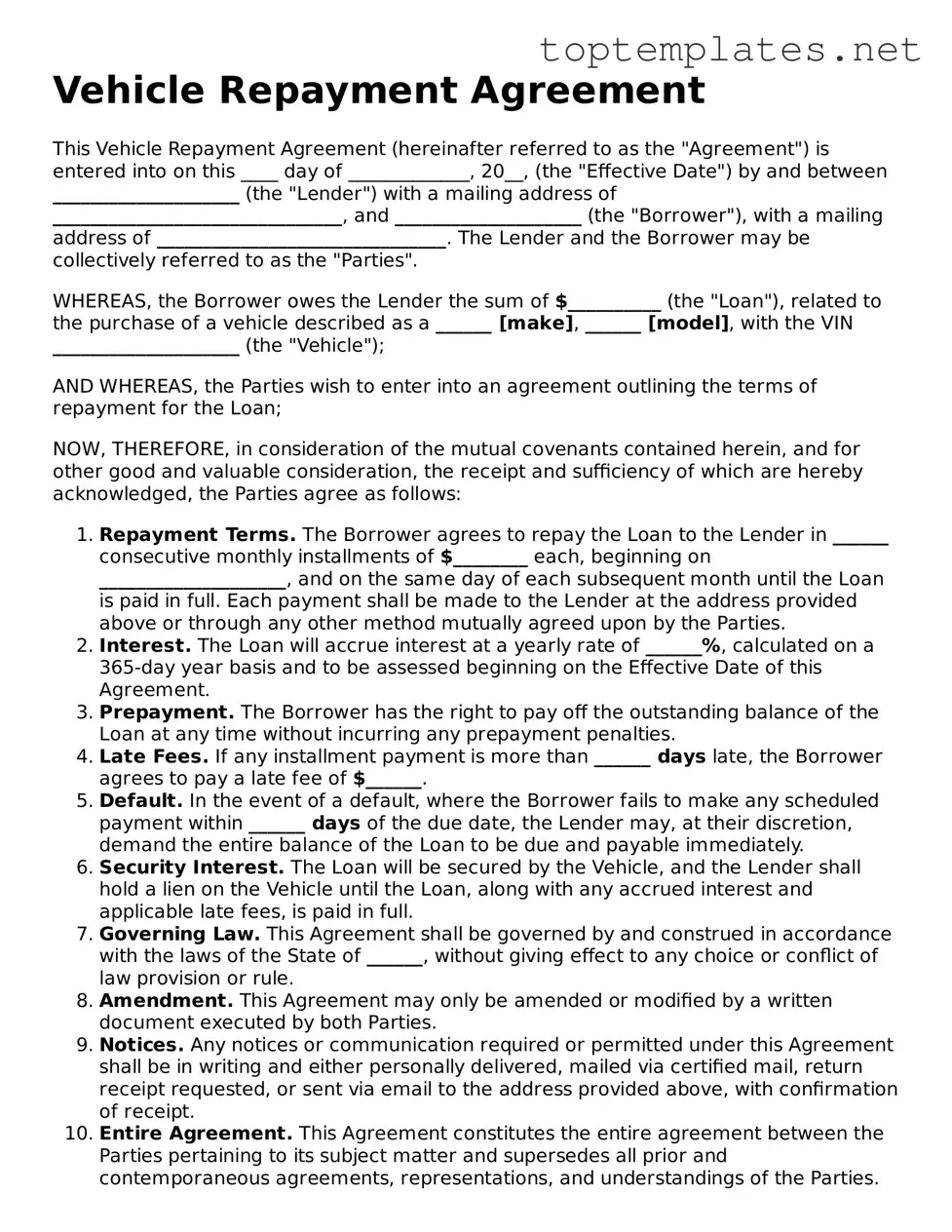What is a Vehicle Repayment Agreement?
A Vehicle Repayment Agreement is a legally binding contract that outlines the repayment terms and conditions for money borrowed to purchase a vehicle. This agreement specifies the loan amount, interest rate, repayment schedule, and the rights and obligations of both the borrower and the lender.
When should I use a Vehicle Repayment Agreement?
Use a Vehicle Repayment Agreement whenever you borrow or lend money for the purchase of a vehicle. This document is essential for setting clear terms and avoiding misunderstandings or legal conflicts between the borrower and the lender.
What are the key components of a Vehicle Repayment Agreement?
Key components include the loan amount, interest rate, repayment schedule, information about the vehicle being purchased (make, model, year), and the signatures of both parties. It may also include provisions on late payment fees, prepayment penalties, and the actions to be taken in case of default.
How can I ensure that my Vehicle Repayment Agreement is legally binding?
To ensure the agreement is legally binding, make sure it is written clearly and includes the full legal names and contact information of the parties involved, precise terms of the loan, and the signatures of both parties. It's also advisable to have the document notarized or witnessed.
Do both the borrower and the lender need to sign the Vehicle Repayment Agreement?
Yes, both the borrower and the lender must sign the agreement. Their signatures formalize the contract, making it enforceable and legally binding.
Can I modify a Vehicle Repayment Agreement after it has been signed?
Modifications to the agreement can be made if both parties consent to the changes. Any amendments should be added in writing, and both the borrower and the lender should sign off on these changes to maintain the document's enforceability.
What happens if the borrower defaults on the loan?
In case of default, the lender has the right to take legal action to recover the outstanding balance. The specific actions that can be taken are usually outlined within the agreement itself, such as vehicle repossession or initiating legal proceedings.
Is a Vehicle Repayment Agreement necessary for transactions between family and friends?
Even for transactions between family and friends, a Vehicle Repayment Agreement is highly recommended. It helps in clarifying the terms and conditions of the loan, thereby avoiding potential disputes or misunderstandings in the future.
Where can I find a template for a Vehicle Repayment Agreement?
Templates for Vehicle Repayment Agreements can be found online through legal services websites. However, to ensure that the document meets specific requirements and is legally sound, consider consulting with a legal professional who can provide a customized agreement tailored to your needs.
